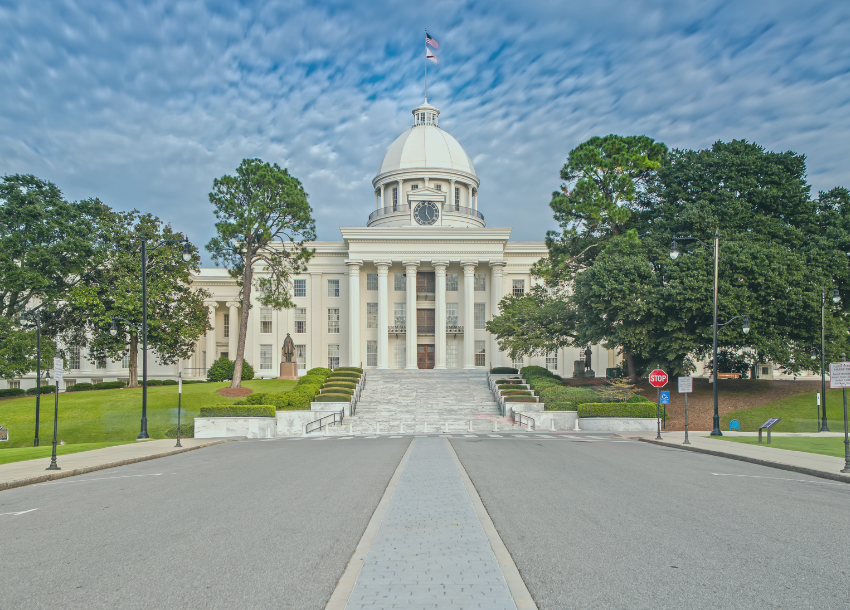The Agility Continues – Another Batch of COVID-19 Inspired IRS Guidance
Less than 48 hours after we gave a hat-tip to the agility displayed by the IRS since the onset of the COVID-19 pandemic and its ability to create new procedures and policies in real time, the IRS had already released at least six new COVID-19 inspired pieces of guidance, tools, or updated forms. So, the agility continues. For a recap of the COVID-19 inspired legislation and related IRS guidance, Nexsen Pruet’s comprehensive COVID-19 information and insights page can be found here. On to the latest batch of guidance and tools that were released just before the Easter weekend:
Revenue Procedure 2020-24 – CARES Act NOL Carryback Guidance
Rev. Proc. 2020-24 provides guidance concerning how to file the net operating loss (NOL) carryback elections available as a result of the CARES Act for the 2018, 2019, and 2020 tax years. For more background on how the CARES Act changed the NOL rules, read this. Rev. Proc. 2020-24 specifically covers elections for: (1) waiving the carryback period for NOLs arising in a taxable year beginning after December 31, 2017, and before January 1, 2020; (2) excluding from the carryback period NOLs arising in a taxable year beginning after December 31, 2017, and before January 1, 2021, any taxable year in which the taxpayer has a IRC § 965(a) inclusion, and (3) waiving a carryback period, reducing a carryback period, or revoking an election to waive a carryback period for a taxable year that began before January 1, 2018, and ended after December 31, 2017.
All of the elections are irrevocable. Consolidated groups are included within the definition of “taxpayer” for purposes of these NOL carryback elections; thus the agent for the consolidate group must make the applicable election. This should begin a wave of amended returns or tentative refund claims as applicable.
Notice 2020-26 – Extension for Application for Tentative Refunds for NOL Carrybacks
Notice 2020-26 grants taxpayers a six-month extension of time to file Applications for Tentative Refunds (Forms 1045 or 1139 as applicable) with respect to the carryback of an NOL that arose in any tax year that began during calendar year 2018 and that ended on or before June 30, 2019. Shortly thereafter, the IRS added some FAQs to further address filing these tentative refund claims.
So, 2018 calendar year taxpayers now have until June 30, 2020, to request a tentative refund, which is before the almost universal July 15, 2020 extended due date for many 2019 tax year filings. However, this extension is limited to requesting a tentative refund to carry back an NOL and does not extend the time to carry back any other item. As of this writing, the IRS has not updated Forms 1045 or 1139 to account for the CARES Act amendments or Notice 2020-26.
Updated Form 941 – Employee Retention Credit Reporting
In order to clarify how to the report the Employee Retention Credit added by the CARES Act, the IRS reissued its Form 941, Employer’s Quarterly Federal Tax Return and the applicable Instructions with the following comment:
If you paid any qualified wages between March 13, 2020, and March 31, 2020, inclusive, you will include 50% of those wages together with 50% of any qualified wages paid during the second quarter of 2020 on your second quarter Form 941, 941-SS, or 941-PR to claim the employee retention credit. Do not include the credit on your first quarter Form 941, 941-SS, or 941-PR.
Basically, any Q1 2019 qualified wages paid-out for Employee Retention Credit purposes should be reported on the Form 941 (or other applicable return) filed for Q2.
Revenue Procedure 2020-22 – CARES Act and 163(j) elections and revocations
Rev. Proc. 2020-22 provides guidance under IRC § 163(j) relating to: (1) late elections (and late revocations of elections) to be an electing real property or farming trade or business, which are generally excepted-out of the IRC § 163(j) limitation on excess business interest; and (2) the time and manner for making three elections created by the CARES Act relating to the IRC § 163(j) limitation. The three CARES Act elections consist of electing: (1) out of 50% adjusted taxable income (ATI) limitation for tax years beginning in 2019 and 2020 (an sticking with the 30% limitation); (2) to use the taxpayer’s ATI for 2019 to calculate the taxpayer’s IRC § 163(j) limitation for tax year 2020; and (3) out of deducting 50% of excess business interest expense for tax years beginning in 2020 without limitation.
This guidance should spur a round of amended return filings as accountants now have some clarity. For example, the ability of a business to elect to use its 2019 ATI limitation in 2020 could generate some significant tax savings. If a business had ATI of $8 million in 2019 but a negative ATI in 2020, it could elect to deduct $4 million of interest expense in 2020 (50% of $8 million), generate a bigger loss, and then use the favorable new NOL provisions to carryback the loss to 2019 (or prior years) and recover taxes paid in that year (or prior years). Rev. Proc. 2020-22 provides the mechanism for making that election and thereby generating those tax savings.
Notice 2020-23 – More Filing and Payment Extension through July 15, 2020
Notice 2020-23 amplifies prior guidance from Notice 2020-18 wherein the IRS extended the filing and payment deadlines for many taxpayers to July 15, 2020. In Notice 2020-23, the IRS made the July 15, 2020 extension applicable to all taxpayers that have a filing or payment deadline falling on or after April 1, 2020, and before July 15, 2020. Individuals, trusts, estates, corporations, and other non-corporate tax filers (REITS and nonprofits) qualify for the extra time, including American taxpayers that live and work abroad. To account for this Notice the IRS updated the applicable FAQs, as well.
Notice 2020-23 also extends the time to file a Tax Court petition, a claim for credit or refund, and a refund suit to July 15, 2020. However, it should be noted that Notice 2020-23 does not extend the time in which to file responses to motions and many other already pending matters in the Tax Court or other Federal Courts. To further illustrate the breadth of this Notice, it applies to certain “time sensitive actions” like those listed in Rev. Proc. 2018-58, such that taxpayers that currently have a like-kind exchange in process under IRC § 1031 may now have additional time, until July, 15, 2020, to comply with the 45-day identification period or the 180-day exchange period.
Now that the filing and payment moratorium until July 15, 2020, is almost as broad as it can be, based on the IRS’s (and Treasury’s) authority, let’s hope the IRS continues to evaluate whether this moratorium needs to be extended even further based on the continuing impact of COVID-19.
Tool for Non-filers to Receive Economic Impact Payments
In order to help non-filers (who do not receive Social Security or Railroad Retirement benefits) receive the Economic Impact Payments ($1,200 for individuals and $2,400 for couples filing joint tax returns, plus $500 per qualifying child – read this for more details) they are entitled to under the CARES Act, the IRS created a tool or submission portal for non-filers to complete. The tool went live on April 10, 2020 and requires non-filers to submit:
- Full name, current mailing address and an email address;
- Date of birth and valid Social Security number;
- Bank account number, type and routing number;
- Identity Protection Personal Identification Number (IP PIN) if you received one from the IRS earlier this year; and
- Driver’s license or state-issued ID, if you have one
- For each qualifying child – name, Social Security number or Adoption Taxpayer Identification Number
While this tool will allow the IRS to send out many more Economic Impact Payments, it will also allow the IRS to collect significant amounts of information on individuals who have operated “off of the books” of the IRS. Given the economic woes of the COVID-19 pandemic, many individuals who’ve operated outside of the IRS’s system (usually on a cash basis) will volunteer information previously unknown to the IRS in order to receive the Economic Impact Payment. In turn, this will likely translate in higher future compliance rates and increased future collection rates by the IRS.
Conclusion
As indicated in earlier Insights, expect similar formal and informal administrative guidance to continue to be released or updated by the IRS given the fluidity of the COVID-19 pandemic. We will continue to cover this new and updated COVID-19 inspired IRS guidance and real time policy and procedure changes, along with any new legislation. Check for the latest Insights and updates here.
For more detailed information and guidance please reach-out to David M. McCallum and your Nexsen Pruet Tax Team.
Our Insights are published as a service to clients and friends. They are intended to be informational and do not constitute legal advice regarding any specific situation.
About Maynard Nexsen
Maynard Nexsen is a full-service law firm with more than 550 attorneys in 24 offices from coast to coast across the United States. Maynard Nexsen formed in 2023 when two successful, client-centered firms combined to form a powerful national team. Maynard Nexsen’s list of clients spans a wide range of industry sectors and includes both public and private companies.







